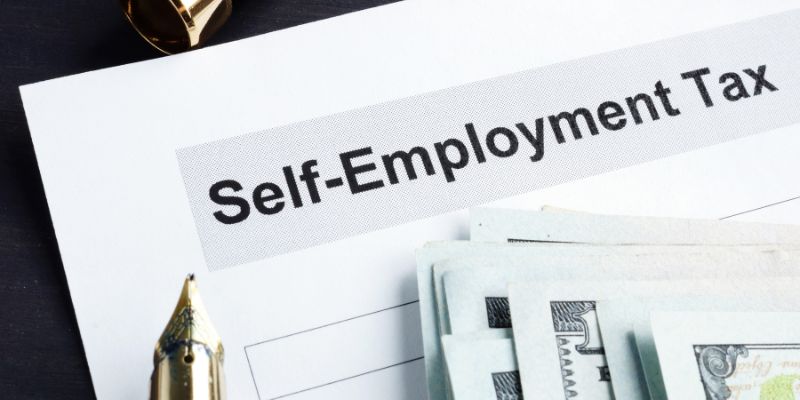Explaining How Do Savings Bonds Work
Dec 01, 2023 By Triston Martin
Saving money is a wise financial move, but have you ever wondered about savings bonds? They might sound a bit complicated but fear not! A savings bond is like a loan you give to the government. When you buy a savings bond, you're essentially lending money to Uncle Sam. In return, the government promises to pay you back the amount you invested, plus a little extra in interest. In this article, we'll break down the basics of how savings bonds work to help you get the basics of saving bonds. Let’s get started!
What are Savings Bonds?
Savings bonds are a way for people to lend money to the government. When you buy a savings bond, you give the government a loan, and in return, they promise to pay you back the amount you invested, plus some extra money in interest. It's like a little savings account, but instead of a bank, it's with the government.
There are different types of savings bonds, but we'll focus on the two main ones:
Series EE Bonds:
These are like the classic savings bonds many of us grew up hearing about. You buy them at a discounted price (less than their face value), and they earn interest over time. Series EE bonds typically mature in 20 years, but you can cash them in after holding them for just one year.
Series I Bonds:
Series I bond, on the other hand, are a bit different. They earn a fixed interest rate, but they also have an additional rate that adjusts with inflation. This means your investment keeps pace with the rising cost of living. Similar to Series EE, you can cash in Series I bonds after one year, but they continue to earn interest for up to 30 years.
How Do Saving Bonds Earn Interest?
Let’s discuss how do the saving bonds earn interest.
Series EE Bonds:
When you buy a Series EE bond, you're getting it at a discounted price, meaning you pay less than its face value. The interest on these bonds is added monthly and compounds semi-annually, which means you earn interest on the interest. Series EE bonds typically mature in 20 years, but you can cash them in after holding onto them for just one year. However, if you cash them in before the 20-year mark, you might miss out on some potential interest.
Series I Bonds:
The series I bond are a bit more dynamic. They earn a fixed interest rate, which stays the same for the life of the bond. On top of that, there's an additional rate that adjusts with inflation, ensuring your investment keeps up with the rising cost of living. Similar to Series EE, Series I bond accrues interest monthly and compound semi-annually. This compounding effect helps your investment grow steadily over time. Like Series EE, you can cash in Series I bonds after one year, but they continue to earn interest for up to 30 years.
Tax Considerations:
The interest you earn on savings bonds is generally exempt from state and local income taxes. This can be a nice perk, especially when compared to some other forms of investment income. If you use the bonds to pay for qualified educational expenses, you might be able to skip federal taxes on the interest. This makes savings bonds a popular choice for saving for education.
Cashing In:
While you can cash in both Series EE and Series I bond after just one year, it's crucial to consider the timing. Cashing in too soon may result in forfeiting some interest. To maximize your returns, holding onto your bonds until they reach maturity is often the best strategy.
When Can You Cash Saving Bonds In?

You can cash in both Series EE and Series I savings bonds after holding onto them for just one year. However, there are a few things to keep in mind:
Series EE Bonds:
While you can technically cash them in after one year, it's important to note that Series EE bonds have a maturity period of 20 years. Cashing them in early, especially before the five-year mark, may result in forfeiting some interest.
To maximize your returns, it's often recommended to hold onto Series EE bonds until they reach their full 20-year maturity.
Series I Bonds:
Similar to Series EE, you can cash in Series I bonds after one year. However, they continue to earn interest for up to 30 years. Cashing in before the 5-year mark may result in a penalty, meaning you lose the last three months' worth of interest. So, it's generally advised to hold onto Series I bonds for at least five years to avoid any penalties.
While you have the option to cash in savings bonds after just one year, it's often more beneficial to wait until they reach their full maturity to get the most out of your investment. Patience can pay off!
Pros and Cons of Saving Bonds

Let's weigh the pros and cons of savings bonds.
Pros:
- Savings bonds are considered one of the safest investments because the U.S. government backs them. Your initial investment is guaranteed, providing a level of security.
- While not a high-return investment, savings bonds offer steady and predictable growth over time. The interest compounds, helping your money grow consistently.
- The interest earned on savings bonds is generally exempt from state and local income taxes. Additionally, if used for qualified educational expenses, federal taxes on the interest may be skipped.
Cons:
- Compared to other investment options, savings bonds offer relatively low returns. If you're looking for higher potential earnings, you might explore other investment avenues.
- While Series I bond has an inflation-adjusted component, the fixed interest rate might not fully keep pace with high inflation periods. This could impact on your purchasing power over time.
- Cashing in savings bonds before the five-year mark may result in a penalty, especially for Series I bonds. You could lose the last three months' worth of interest.
Conclusion
In a nutshell, savings bonds are a straightforward way to save money and earn a bit of interest in the process. They're a low-risk investment backed by the good ol' U.S. government. So, if you're looking for a reliable way to grow your savings without the complexities of the stock market, savings bonds might be worth exploring.
-
 Taxes Jan 16, 2024
Taxes Jan 16, 2024What is Self-Employment Tax?
This article will guide you on who, how, when, and where to pay your self-employment tax.
-
 Banking Jan 16, 2024
Banking Jan 16, 20245 Best Credit Cards That Offer Free Checked Bags
If you want to pick the right card to make your trip smooth, find the best credit cards that let you check the bags for free
-
 Know-how Dec 01, 2023
Know-how Dec 01, 2023Explaining How Do Savings Bonds Work
Let’s unlock the secrets of savings bonds with our simple guide! Explore the world of Series EE and Series I bonds and understand how they work.
-
 Mortgages Oct 14, 2023
Mortgages Oct 14, 2023Does Inflation Cause a Recession
Are you curious about the relationship between inflation and recession? Dive into this article to understand how they work together and get insights from professional economists.
